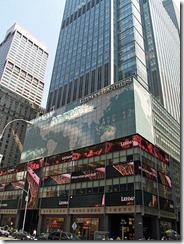 The book ‘The Big Short: Inside the Doomsday Machine’ is Michael Lewis’ marvellous account of the idiocy and greed that led to the sub-prime bubble and the resulting global financial crisis.
The book ‘The Big Short: Inside the Doomsday Machine’ is Michael Lewis’ marvellous account of the idiocy and greed that led to the sub-prime bubble and the resulting global financial crisis.
Lewis’ book focuses on a few smart people who saw the simple truths beneath the complex world of financial jiggery-pokery that led to wealthy people becoming even wealthier on the backs of others who were sold the dream of owning their own homes irrespective of their income, assets or ability to pay.
These few smart people bet their shirts against what they saw as a house of cards. The house they saw was built on a belief that the complexity of asset-backed securities, credit default swaps, collateralised debt options and other sophisticated financial instruments were a valid contribution to national and international growth and would make banks and bankers a whole lot of money along the way.
Apart from their aspirations the smart folks were interesting in another way. Most were outliers of one type or another – people who lived and worked outside the norm. One was a one-eyed doctor with Asperger syndrome, others were ‘rejects’ from Wall Street, or anti-social smart-thinking loners who had turned their backs on steady jobs and big salaries. Most had no desire to work and intermingle in mainstream financial services and markets.
Of course we know now that these people were right and the armies of financial experts and self-styled ‘masters of the universe’ in the big investment banks were wrong. The outliers saw stupidity and self-interest for what it was. They won their bets. The outcome was that almost everyone apart from these ‘oddballs’ suffered.
So what does this story have to do with my world – a world focused on new ways to help organisations thrive in the 21st century? Encouraging them to change, adapt and modify the approaches they use to increase performance and productivity – and enabling their employees to work smarter, innovate, and continuously over-deliver?
Quite a lot, as it happens.
What caught my eye early on in ‘The Big Short’ was Lewis’ observation that ‘ ..there are some things that can’t be taught’.
He could have added ‘but those things still need to be learned..’
 Despite the sophistication, the big brains and the resources available to the traders and executives in Lehmann Brothers, Merrill Lynch, Morgan Stanley and the rest, it appears they failed to see this simple truth. That no matter how smart you are, you still needed to carry on learning.
Despite the sophistication, the big brains and the resources available to the traders and executives in Lehmann Brothers, Merrill Lynch, Morgan Stanley and the rest, it appears they failed to see this simple truth. That no matter how smart you are, you still needed to carry on learning.
It also appears they were unaware of another simple truth – that continuous learning is the only sustainable asset in a world of constant change.
This is not really surprising. These are common oversights and blind-spots when people believe they know best and ignore the insights, experience and wisdom of others.
 If the people working in the banks and rating agencies had taken the time to step back, ponder and question some of the fundamentals that underpinned their assumptions and decisions, then they would have been able to see that the roller-coaster they had started was running out of control.
If the people working in the banks and rating agencies had taken the time to step back, ponder and question some of the fundamentals that underpinned their assumptions and decisions, then they would have been able to see that the roller-coaster they had started was running out of control.
They didn’t. Most had tunnel-vision.
Now no-one was telling or teaching (or ‘instructing’) them to do this. The tools they’d created and the methods of using the tools had not been taught in business school. There was often an assumption that once the ‘smart work’ of setting them up the work was all finished and done – no need to think about them further.
However, managing these beasts (and deciding when to ‘kill’ them) needed mind-sets that appreciated the need for continuous learning, relearning, and re-adjustment of thinking in situ.
The smart outliers certainly understood the need for continuous learning.
And they were self-directed learners.
Some of their learning didn’t require a sophisticated understanding of the arcane financial instruments that were driving the world towards the precipice (although they each had that). But it did require passion for, and an understanding of, self-directed learning and being aware of the changing world around them.
And the continuous learning sometimes required effort. Two of these outliers spent time walking the back-streets of down-beat towns in Florida, looking at the ebb and flow of communities there, who had jobs, who didn’t, what type of work and security was available, and re-framing their views on the percentage of defaults on mortgages likely to occur.
The Wall Street bankers left their 40th floor offices to go to expensive restaurants. They didn’t consider learning, unlearning and re-learning were of any great value to them.
The Lessons
I think there are some simple lessons we can learn from this story.
- Firstly, in complex environments self-directed learning is not optional, it’s absolutely essential.
- Also, we know the world is changing on a daily basis. What we knew to be true yesterday may not be true tomorrow. Continuous learning is the best tool available in dynamic environments.
- And we know that reflection and critical ‘out-of-the-box’ thinking are are essential to help direct the focus of continuous learning.
For learning professionals the message is also this:
The most important single thing you can do to ensure your organisation develops a continuous learning culture is to help the development of self-directed learning skills. Help your workforce improve its meta-learning.
These meta-learning skills don’t live in isolation. They live with other ‘core skills’ that thoughtful, flexible work needs.
I have written about these core continuous learning skills previously, but I think it is worth listing the main ones again:
|
Effective search and ‘find’ skills |
To quickly and find the right information when it’s needed. |
|
Critical thinking skills |
To extract meaning and significance from situations and data, and be prepared to go back and review and re-frame as often as possible. |
|
Creative thinking skills |
To generate new ideas, and new ways of using information. Always avoiding the belief that there is only one solution. |
|
Analytical skills |
To visualise, articulate and solve complex problems and concepts, and take decisions that make sense based on the available information. |
|
Networking skills |
To identify and build relationships with others who are potential sources of information, knowledge and expertise within and outside your team, your organisation and your domain. Actively seek ‘outliers’ and people who may see the world differently from you. |
|
People skills |
To build trust and productive relationships that are mutually beneficial for information sharing and sense-making. |
|
Logic |
To apply reason and logical argument to extract meaning and significance from situations. |
|
A solid understanding of research methodology |
To validate data and the underlying assumptions on which information and knowledge is based. |
There is no doubt that a first step is changing our mind-set from one that sees learning as a series of events to one that acknowledges learning is a continuous process that happens at any time, anywhere. We know that learning doesn’t just happen in controlled and structured environments but that most learning is embedded in the flow of work.
A second step should be to do something to about changing the way we work, and create environments that provide tools and support to workers so they can do their jobs better through bringing learning into their work.
An adage I’ve found helpful to keep focus on the importance of continuous learning is ‘when working is learning, then learning is working’.
 ConsultMember of the Internet Time Alliance and Co-founder of the 70:20:10 Institute, Charles Jennings is a leading thinker and practitioner in learning, development and performance.
ConsultMember of the Internet Time Alliance and Co-founder of the 70:20:10 Institute, Charles Jennings is a leading thinker and practitioner in learning, development and performance.
Charles,
"Continuous learning is the only sustainable asset in a world of constant change." Brilliant!
This is such an incredible post full of wisdom. I also want to mention your 70 20 10 video which we saw and wrote about today: http://wp.me/p1irwj-kh
Thanks, Helen.
I wrote a piece here about the 70:20:10 framework a couple of months ago (august 2011) and have been working with it for 7-8 years now.
I've implemented 70:20:10 in large multinational companies, and help others do the same.
There is no doubt in my mind that, when carefully developed, it provides a very powerful approach to the twin challenges of 'the need for speed' in today's world – keeping up-to-speed without the inherent lag that accompanies formal learning – and 'swimming, not drowning' in today's ocean of data and information.
Hi Charles, thanks for the post, which I found very useful.
I've added a reference to some work done by Prof. Ralph Stacey, who you may know, which I have found useful when thinking about the issues that you have discussed here and in your other posts about the 70:20:10 model.
In his boook 'Strategic Management and Organisational Dynamics: The Challenge of Complexity' 2003, p.422 he talks about an approach to management competences that refocuses attention ‘not on what members of an organisation should be doing, but on what they are already, and always have been, doing’.
His position is that by following this line of approach people become, through reflexive approaches, more aware of what is going on around them and, by so doing, interacting more effectively. The skills and competences that he identifies to achieve this are similar to what you have listed: ‘the capacity for self reflection and owning one’s own part of what is happening, skill in facilitating free-flowing conversation, ability to articulate what is emerging in conversations and sensitivity to group dynamics.’
I also particularly liked the section that follows in which he makes a thoughtful critical challenge to the orthodoxies of learning practice:
‘[These skills are] not easily taught, perhaps cannot be taught, in an abstract way. They are essentially acquired in the experience of exercising them….[these skills]…are much fuzzier and the steps to achieving them even more nebulous. The response might be to stay with systemic management perspectives. … [as] they have applications and prescriptions that are much easier to grasp. However,…this easier option is not viable in the increasingly complex world of organisations…an increasing commitment to grapple with these issues [is required]. (ibid).’
My sense is that organisations are becoming open to approaches like this but there remains quite a lot of inertia around the prescriptions to which Ralph refers. Our challenge is to be able to explain, encourage and facilitate experimentation.
Thanks for your comments, John. I know a little of Ralph Stacey's work, and think you've picked a couple of intersects with my own thinking hers.